|
|

|

|
 |
|
Last Updated: Mar 24, 2017 - 11:01:40 PM |
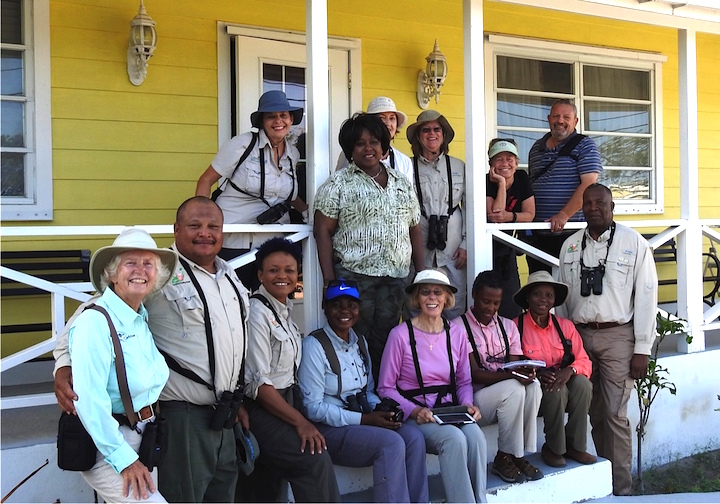
Grand Bahama Birders with their Inagua guides on first morning of birding.
|
Freeport, Bahamas - A group of Grand Bahama birders recently travelled to Inagua to observe a number of birds that are never or rarely seen on other family islands. The trip was organized by Erika Gates, Delores Kellman, Martha Cartwright and Judith Dawkins.
The group was met on arrival in Inagua by three certified, professional birding guide: Tarra Lindo, Casper Burros and Vivian Moultrie. These three would guide the group over the next three days.
The guides were certified under a 1 ½ year training program organized by the Bahamas National Trust and the American Audubon Association. Although Tarra, Casper and Vivian had guided individual birders before, this larger group would be challenging their guiding and birding skills! The Grand Bahama Birders had sent a list with their target species they hoped to see on Inagua and were not let down as the list was not only met but exceeded!
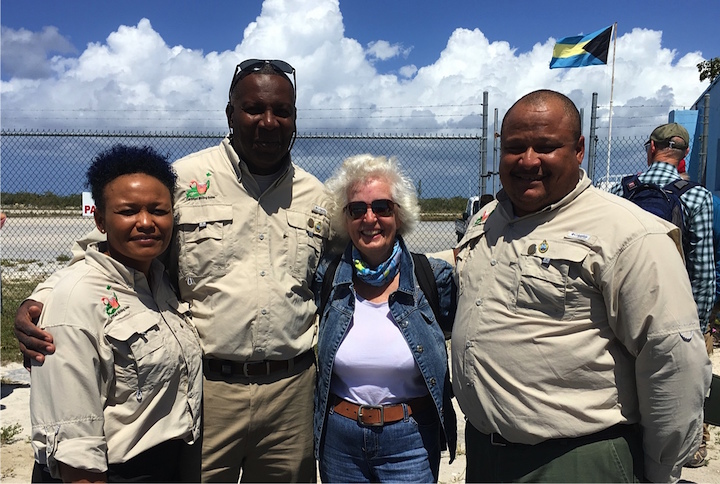
Inagua Birding Guides, Vivian, Tarra and Casper re-unite with Erika who worked with them during the Bird Guide Training program in 2016
|
Tarra, Casper and Vivien were the perfect hosts and not only knew where to find the birds but provided in depth and interesting historic information about the island of Inagua where they were born, raised and each has a career - Tarra as a physical education teacher at Matthewtown All Age School, Vivian as the Human Resource Manager at the Morton Salt Company and Casper as a third generation Bahamas National Trust Park Warden who guards one of our National Symbols – 60.000 flamingos! All three show their deep love for the island and have chosen the opportunity to protect its birds and their habitat by sharing these treasures and raising awareness in residents and visitors alike.
The Grand Bahama Group never seemed too tired to view and photograph the stately and elegant flamingo, however, there were so many more bird species to find and observe.
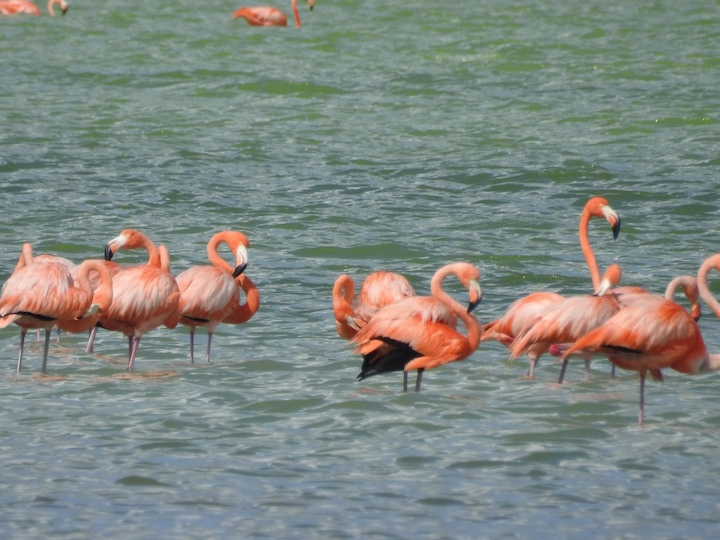
We stopped counting at 3000 but were assured that recent counts have yielded 60.000 flamingos, well and alive ! (Photo: Erika Gates)
|
What would a visit to Inagua be without watching the Cuban Parrot (that is the correct name, although we prefer to call it the Bahama Parrot, it is not a Bahamian endemic bird as it also occurs in Cuba!). Matthew Town, the only settlement on Inagua, seems to be invaded this time of the year by the parrots because another national symbol, the Lignum Vitae tree is fruiting. Parrots are all over these trees, extracting the bright red seed out of the yellow capsule and getting their beaks stained red from the juice of this succulent delicacy.
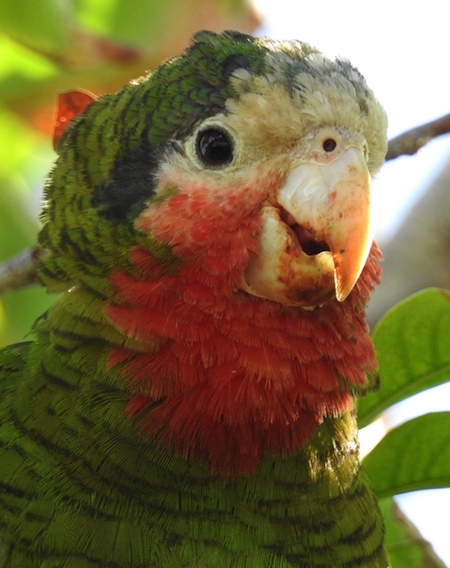
Parrot with red beak from the juicy fruit of Lignum Vitae (Photo: Erika Gates)
|
All the birds were quite spectacular but there is one bird in particular that is found nowhere else in the world except in Inagua – the endemic Inagua Woodstar! Our guides took us to a location where these little gems were happily feeding. The following days we saw more feeding on a variety of native, nectar producing vegetation and our star photographer, Duncan Mullis was able to get a signature shot of a gorgeous male showing off his iridescent gorget (throat patch)!
During its visit to Inagua, the Grand Bahama Group was able to observe a total of 75 species and compose 21 checklists of different sites where the birds have been observed. These lists have been submitted with photos into the ebird database at Cornell University where they may be accessed by scientists for research or simply enjoyed by other birders and the public. (www.ebird.org)
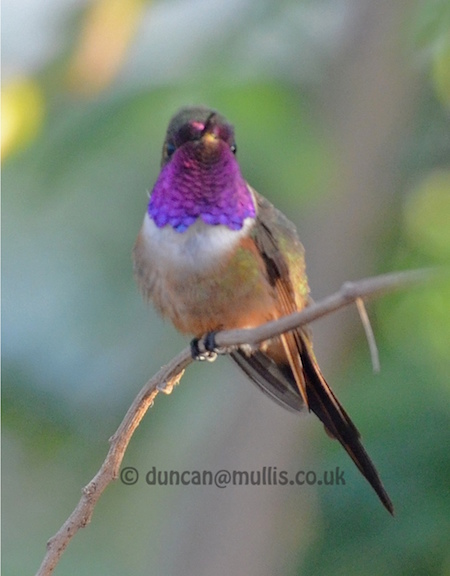
Male Inagua Woodstar (Photo: Duncan Mullis)
|
Photos of some of the other bird species observed:
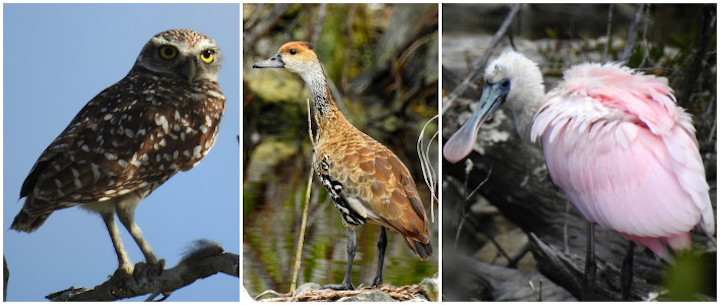
Left to right: Burrowing owl; West-Indian whistling duck; and a Roseate Spoonbill
|

© Copyright 2017 by thebahamasweekly.com
Top of Page
|
|
 |

|
